Infinite numbers of bloks are placed on a table on a edge as shown in the diagram.
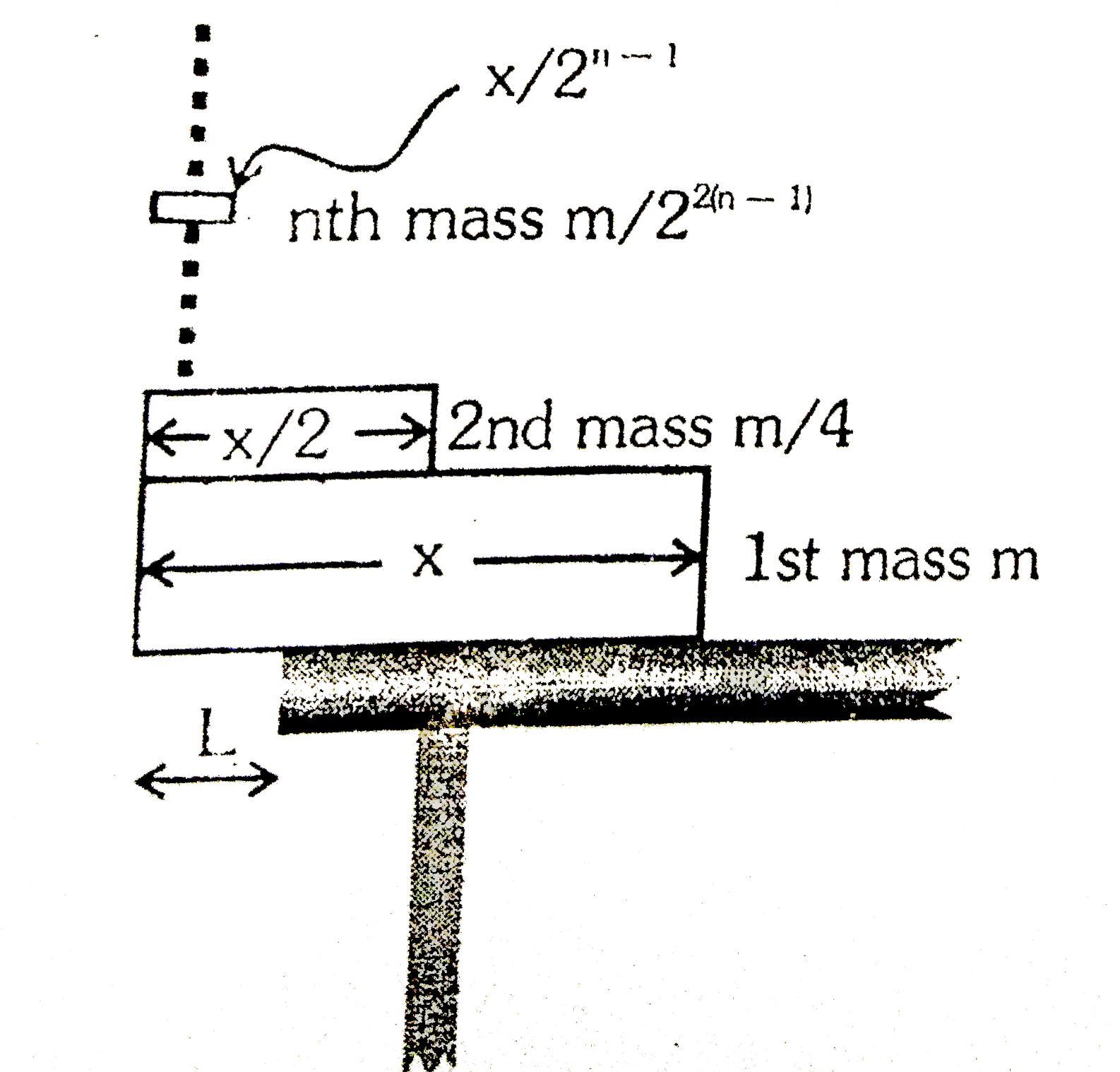
What is the minimum value of L so that the blocks are just going to topple over the table ?Solution in Gujrati
x/3
2x/5
3x/7
4x/9
The correct Answer is:C
Centre of mass of combination should lie on edge of table.
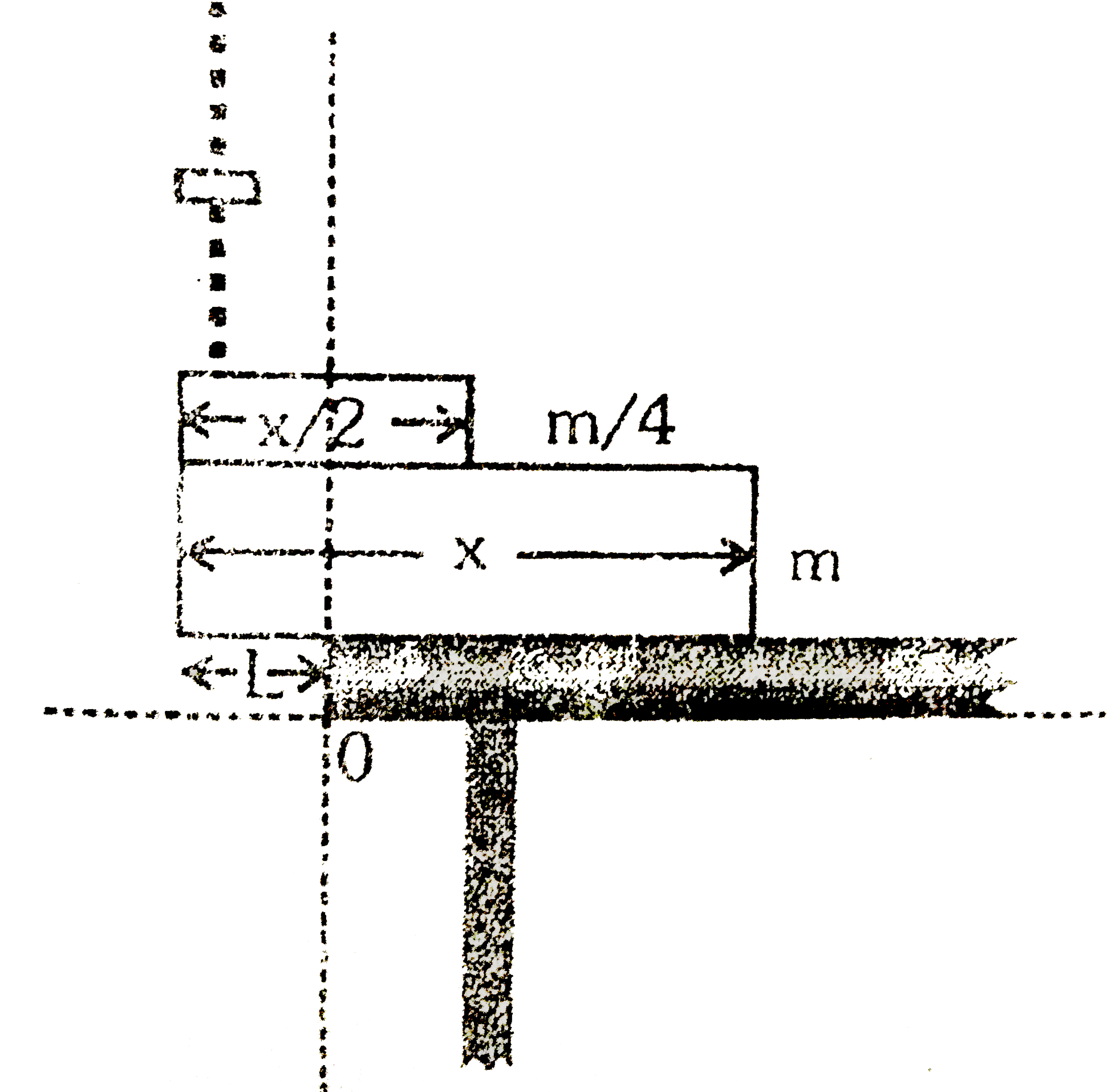
xCOM=0
xCOM=[m(x2−L)+m4(x4−L)+m16(x8−L)]∑M=0
x2[1+18+182+.......]−L[1+14+142+......]=0
x2⎡⎣11−18⎤⎦−L⎡⎣11−14⎤⎦=0
L=3x7
Topper's Solved these Questions
- CENTRE OF MASSBOOK - ALLEN CHAPTER - CENTRE OF MASSEXERCISE - EXERCISE-II
43 Videos
- CENTRE OF MASSBOOK - ALLEN CHAPTER - CENTRE OF MASSEXERCISE - EXERCISE-III
41 Videos
- CENTRE OF MASSBOOK - ALLEN CHAPTER - CENTRE OF MASSEXERCISE - EXERCISE-V B
19 Videos
- BASIC MATHEMATICS USED IN PHYSICS &VECTORS BOOK - ALLEN CHAPTER - BASIC MATHEMATICS USED IN PHYSICS &VECTORS EXERCISE - EXERCISE-IV ASSERTION & REASON
11 Videos
- ELASTICITY, SURFACE TENSION AND FLUID MECHANICSBOOK - ALLEN CHAPTER - ELASTICITY, SURFACE TENSION AND FLUID MECHANICSEXERCISE - Exercise 5 B (Integer Type Questions)
3 Videos
Similar Questions
Two particle A and B start moving due to their mutual interaction only. If at any tiem 't', →aA and →aB are their respective accelerations, →vA and →vB are their respective velocities, and upto that time WA and WB are the work done on A and B respectively by the mutual force, mA and mB are their masses respectively, then which of the following is alwys correct.
View SolutionA particle of mass m, kinetic energy K and momentum p collision head on elastically with another particle of mass 2m at rest. After collision. :
Column IColumn II(A)Momentum of first particle(p)3/4p(B)Momentum of second particle(q)−K/9(C)Kinetic energy of first particle(r)−p/3(D)Kinetic energy of second particle(s)8K9None
View SolutionTwo particles of masses m1 and m2 in projectile motion have velocities →v1 and →v2 , respectively , at time t=0. They collide at time t0. Their velocities become →v'1 and →v'2 at time 2t0 while still moving in air. The value of ∣∣∣(m1→v'1+m2→v'2)−(m1→v1+m2→v2)∣∣∣
View SolutionAssertion: If the initial and final positions coincide, the displacement is a null vector.
Reason: A physical quantity can not be called a vector, if its magnitude is zero.
View SolutionTwo soap bubbles A and B are kept in a closed chamber where the air is maintained at pressure 8N/m2.The radii of bubbles A and B are 2cm and 4cm, respectively. Surface tension of the soap-water used to make bubbles is 0.04N/m. Find tha ratio nB/nA, where nA and nB are the number of moles of air in bubbles A and B, respectively. [Neglect the effect of gravity.]
View SolutionFind minimum value of l so that truck can avoid the dead end, without toppling the block kept on it.
View SolutionA block on table shown in is just on the edge of slipping Find the coefficient of static friction between the blocks and table .
View SolutionA homogeneous chain of length L lie on a table. If the coefficent of friction is mu , find the maximum length L_(1) of the chain which can hang from the edge of the table without the chain sliding down. (b) Consider the situation as shown in the figure. Find teh minimum value of m so that the blocks do not move.
View SolutionWhat is the minimum value of the mass M so that the block is lifted off the table at the instant shown in the diagram ? Assume that the blocks are initially at rest. .
View SolutionA uniform chain of length l is placed on rough table with length l/n (where n>1) , hanging over the edge. If the chain just begins to slide off the table by itself from this position, the coefficient of friction between the chain and the table is
View SolutionA uniform cubical block of mass M and side length L is lying on the edge of a rough table with 14th of its edge overhanging. When a small block of mass m is placed on its top surface at the right edge (see fig.), the cube is on verge of toppling. The block of mass m is given a sharp horizontal impulse so that it acquires a velocity towards B. The small block moves on the top surface and falls on the other side. What is maximum coefficient of friction between the small block and the cube so that the cube does not rotate as the block moves over it. Assume that the friction between the cube and the table is large enough to prevent sliding of the cube on the table.
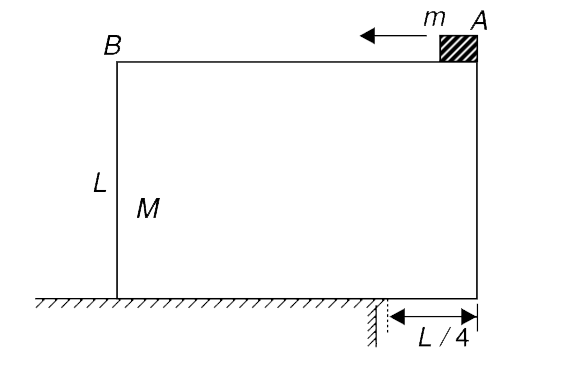
View SolutionAs shown in figure, the left block rests on a table at distance l from the edge while the right block is kept at the same level so that thread is unstrectched and does not sah and then released. What will happen first?
View SolutionA uniform chain of mass m and length l is lying on a horizontal table with one-third of its length hanging over the edge of the table.
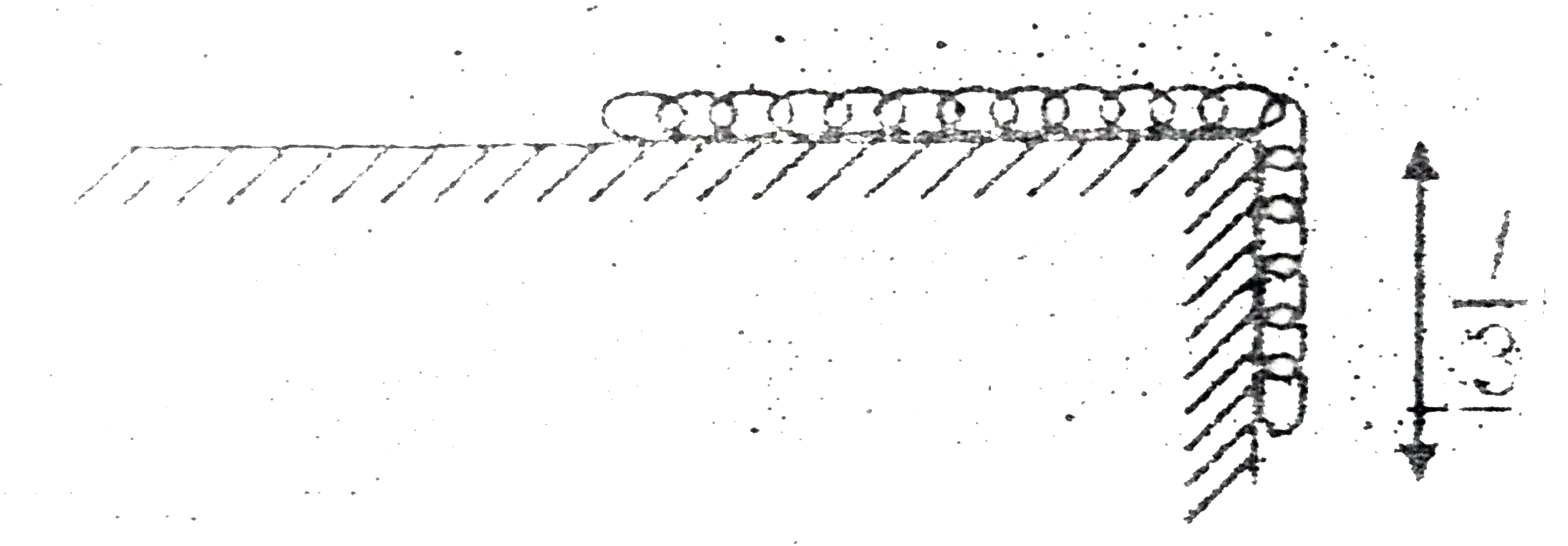
What is the speed of the chain, when it just loses contact with the table?
View SolutionIf the friction is sufficient to prevent the block from sliding, then the minimum value of F for which the cube begins to topple about an edge is
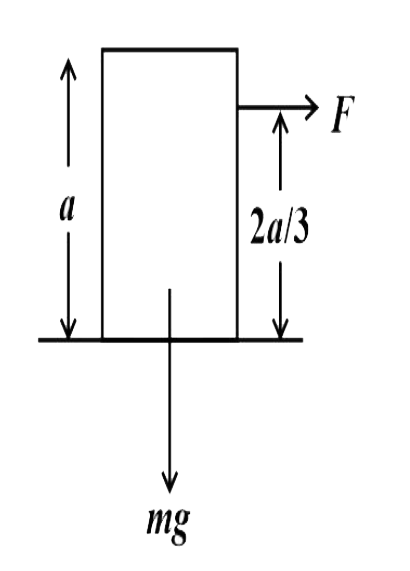
View SolutionA uniform chain of length l is placed on a rough table, with length l/3 hanging over the edge. If the chain just begins to slide off the table by itself from this portion, the coefficient of friction between the chain and the table is 1/K. Then find the value of K.
View Solution4kg द्रव्यमान का घनाकार गुटका मेज पर रखा है। गुटके के एक किनारे की लम्बाई 2cm है। गुटका द्वारा मेज पर लगने वाले दाब को ज्ञात करें।
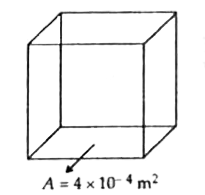
View Solution
